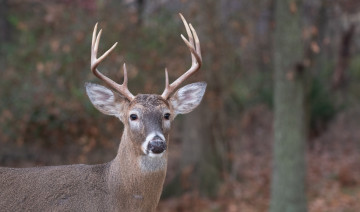
It is Not too Early to Start Planning for Next Year
Although this years’ set of antlers are what they are, in the fall we start to build for the next set of antlers. We need to keep body condition up to help the buck get through rut in good condition and post-rut. We need to make sure the buck has a well-balanced diet to ensure repletion of bone mass, minerals for next summer’s antler growth, and body mass, as well as the amino acids needed to support antler growth next year. Mature white-tailed deer will sometimes go days during the rut without eating and can lose up to 30% of their body weight due to the stress of rutting activity. Post-rut stress is responsible for more deaths of mature deer than anything (hit by vehicles, predators, etc.), because they are run down and typically have very low-quality forage available to replenish body reserves. Bucks that are still growing or trying to replenish body reserves in late spring and summer will not grow the antlers that they have the genetic potential for if they are still trying to restore body condition.
How do we meet these year-round nutritional needs, you might ask? The first thing we do is work to make sure the deer density is correct for the land base. That may mean working with a Wildlife Biologist. Next, we need to look at making sure we are ready to supplement the native habitat when needed, such as during drought, winter, or when the animal has higher nutrient requirements than what they will get off the habitat. This means balancing food plots and supplemental feed to meet those needs. Feeding a complete balanced protein/ mineral/ energy supplement year-round makes sense because you are either growing antlers or remodeling bone and that requires sufficient amounts of each for maximum genetic expression. Be sure to use a supplement that complements the native habitat and does not replace it. All the supplemental feed in the world will not replace good habitat.
As you can see, antler growth is a year-round job and just because you do not see antler growth taking place does not mean it is time to take a break from optimum feeding of the buck. Late Summer to early Fall is the most influential time nutritionally on antler development, so be sure you are providing the best you can for your herd. For a free nutritional evaluation for your current program, feel free to contact us anytime.
WARNING: The feeding and baiting of wild deer is prohibited in some regions. Consult local laws and regulations before using supplemental feeds and/or attractants.
The feed room is proudly brought to you by Nutrena and Cargill Animal Nutrition. Learn more about us here. You can see the original blog post here.
